
Count Castanos
Left Wing
40,320 infantry
1280 militia cavalry
56 artillery pieces
THE BATTLE OF SEGOVIA
July 19th - 1809
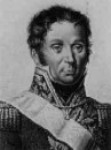
General Kellerman
III Corps
24,000 French infantry
2240 cavalry
24 artillery
|
Count Castanos 40,320 infantry |
THE BATTLE OF SEGOVIA July 19th - 1809
|
24,000 French infantry |
Following the repulse of Wellington at Valladolid, Castanos found himself and his Left Wing dangerously close and isolated to Napoleon's army of The Pyrenees. The Spanish commenced to withdraw toward Madrid and halted at Segovia. There, they sought to get confirmation of Wellington's intentions. Napoleon had suffered at Valladolid also and had held at Valladolid to receive replacements from Bayonne. Catching wind of Castanos' presence on his left flank, Napoleon ordered his strongest remaining Corps to probe the road to Madrid. When Kellerman's III Corps found Castanos at Segovia, Davout was ordered to hurry to the field but his Corps, still fatigued from the battle at Valladolid, could not reach the fight.

(Looking at the map now, it appears that we screwed it up and didn't notice at the time. We opted to represent the two southernmost streams as dry riverbeds, which was fine, but we use road terrain pieces for them. Somehow, though we certainly never lost track of the western dry streambed, the central one was treated as a road by me at least and nobody called me on it.)
Castanos is deployed on hills behind a stream that is, in some places, dry but it is still difficult to cross. He chooses to place four of his seven artillery batteries in a reserve to wait until the French are committed. The hope is that this will protect his guns from French counter-battery fire. Kellerman advances in a straightforward manner.
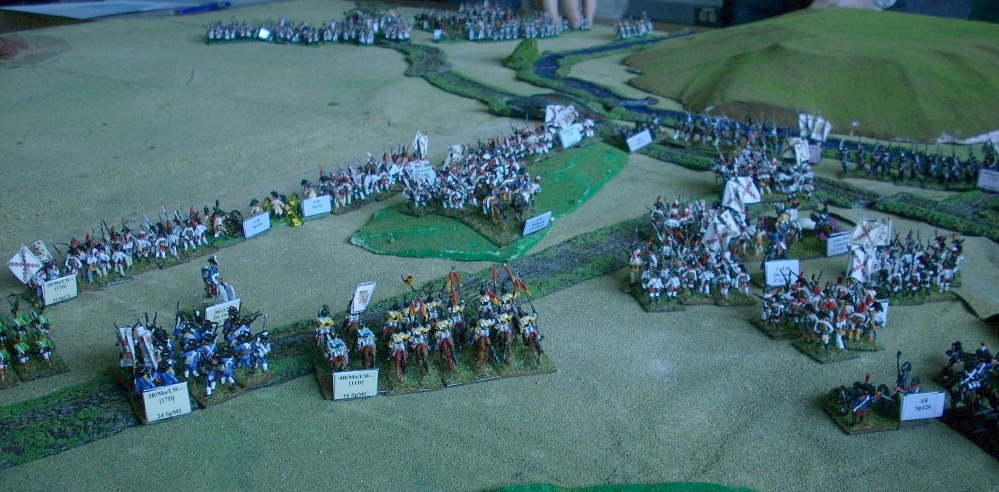
The French get stuck in quickly with one division seeking to attack from the northern hills while two other divisions try to assault frontally. The French are unable to bring their artillery to bear in support of their attacks. The Spanish forward guns do some sobering damage to the French attackers. In general, the French gain moderate success against the initial Spanish defences.

As the front line of the Spanish army begins to be sent reeling back, their second line takes up position to receive the pressure. Spanish reinforcements are seen marching down the road/dry river bed.
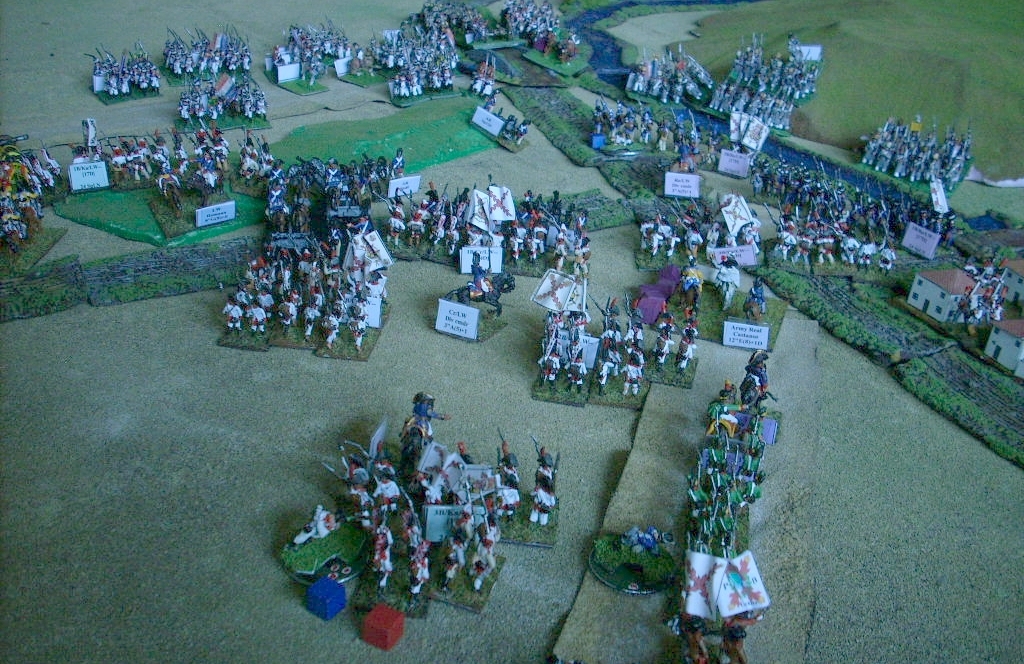
The French are hurled back from the initial attacks up the hill and the Spanish artillery is well placed to pound them as they regroup. In the north also, the French are turned back from an assault across the stream. In the center, the Spanish artillery reserve stalls the French advance.
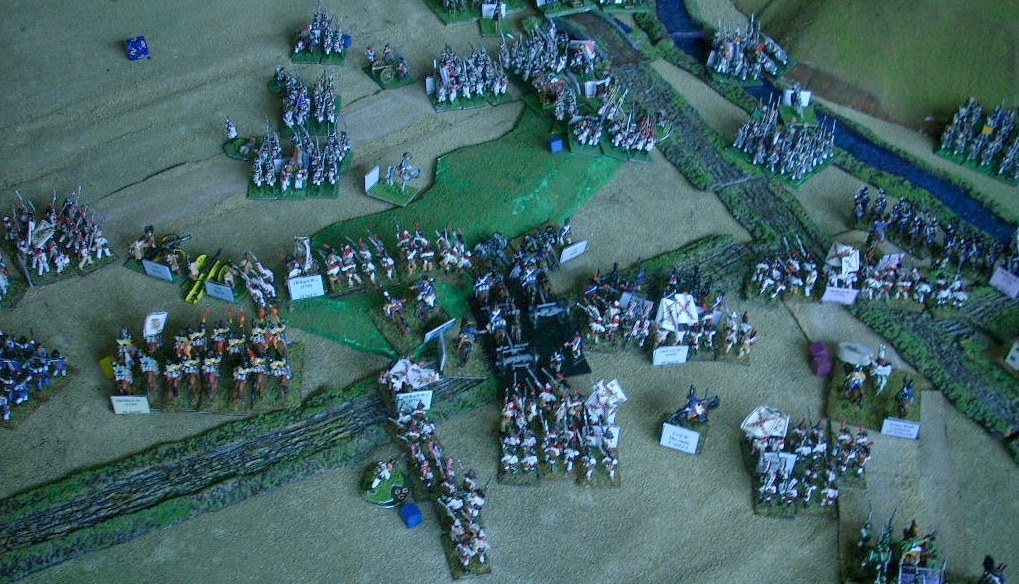
The attack on the French right is entirely halted. With artillery support, the Spanish are able to begin advancing and two whole French divisions are ordered to retreat to the rear. Each division leaves one brigade on the line to cover the retreat. Castanos finds though that he cannot take advantage of the French retreat on his left as his troops are incapable of manoeuvring through the dry streambeds in any good order. Meanwhile, Kellerman struggles to get his cavalry are artillery across the streams in the center.
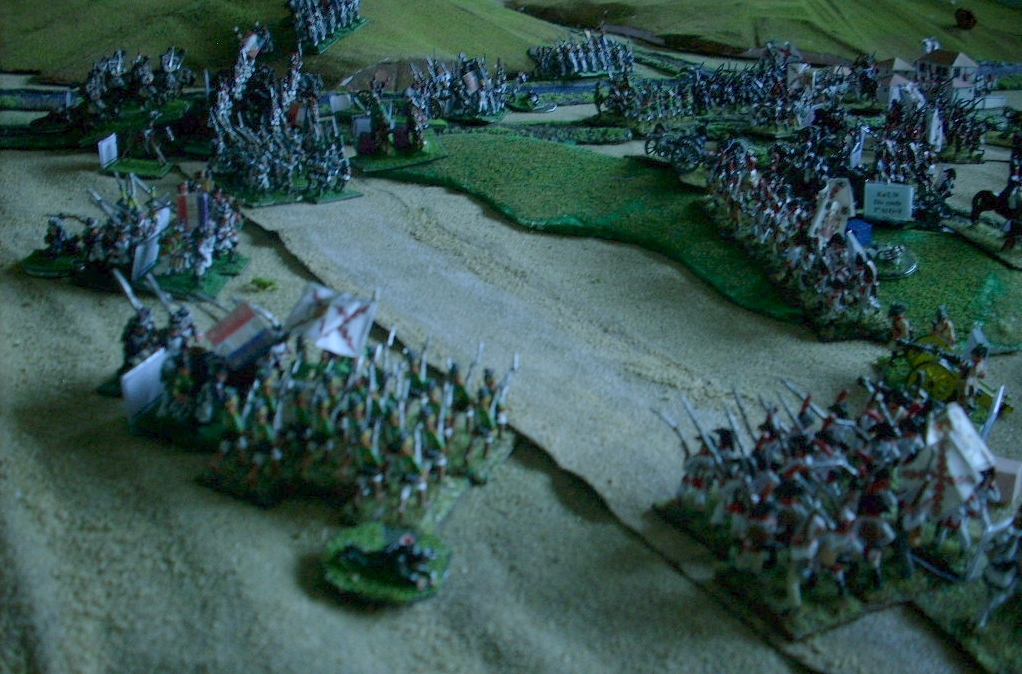
It is afternoon and the battle appears won for Castanos. Only four of the nine French infantry divisions are still in the fight. In the Center, Castanos sees only the French cavalry as his remaining threat and orders his center into squares, well supported by the deployed artillery reserve.
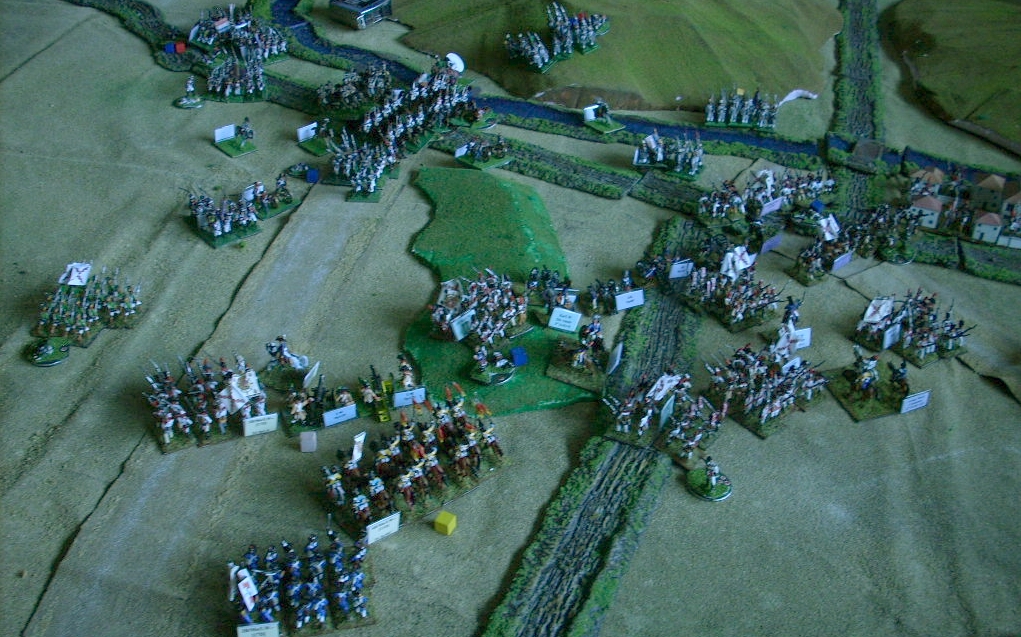
But Kellerman's left continues to attack and make steady progress. As well, now that his artillery has gotten across the river, they very quickly destroy the heavy guns of the Spanish artillery reserve. As Kellerman's left pushes toward the center, Castanos is forced to draw upon his third line of troops. They are deployed in lines, knowing that infantry are now the greatest threat. Castanos' left is stalled and thrown back by a single brigade of infantry, supported by a battery of twelve pounders.
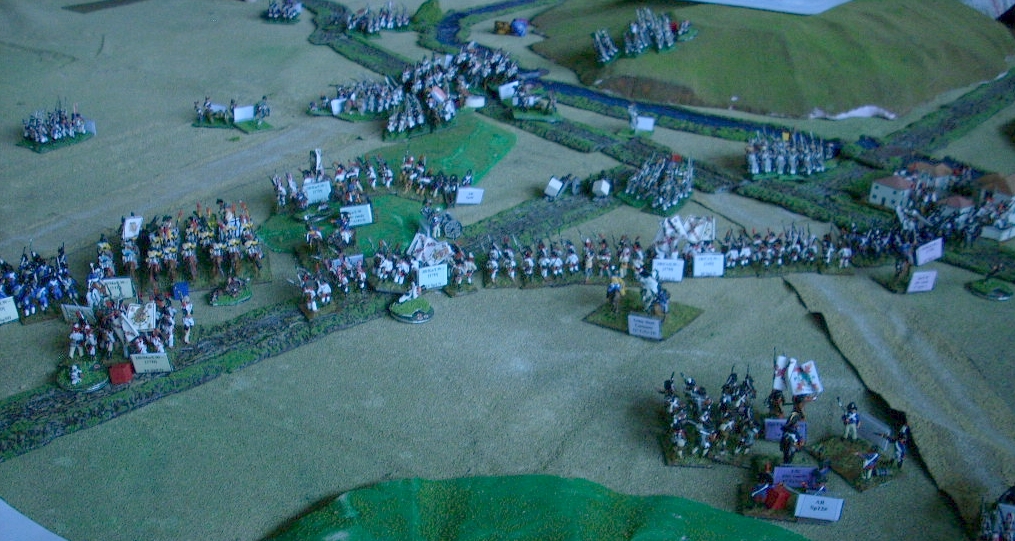
As the evening brings darkness to the battlefield, the French right has rejoined the battle just as the left becomes exhausted. The French cuirassier finally did get to make a charge and they routed an entire division on their own but they are near to destroyed in the process. The Spanish army is smashed and retreats back toward Madrid. Kellerman has turned what seemed a defeat into a brilliant victory but he dreads sending his casualty reports to the Emperor.

There were two turning points to the battle. The first was when the French conducted a retreat with their right flank, extricating half the corps from a perilous situation. It prevented a catastrophe and the Spanish troops that had been set up to do the outflank were unable to shift themselves in any way to get back into the battle.
Secondly, when the French artillery was finally able to bring counter-battery fire upon the Spanish artillery reserve, it turned the Spanish guns from a decisive threat to wreckage and debris.